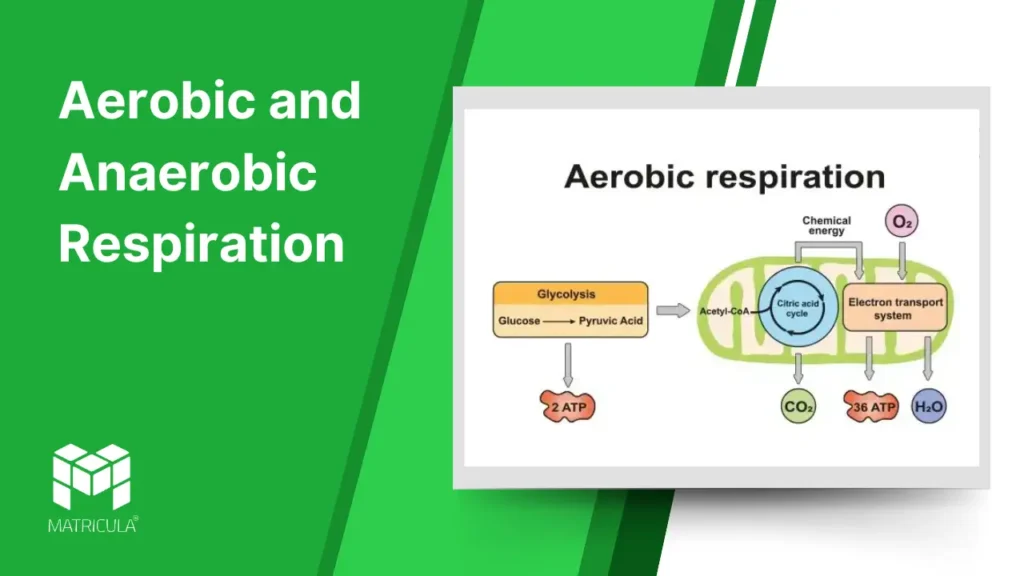Respiration is a fundamental biological process through which living organisms generate energy to power cellular functions. It occurs in two main forms: aerobic and anaerobic respiration. While both processes aim to produce energy in the form of adenosine triphosphate (ATP), they differ significantly in their mechanisms, requirements, and byproducts. This article delves into the definitions, processes, and differences between aerobic and anaerobic respiration.
Aerobic Respiration
Aerobic respiration is the process of breaking down glucose in the presence of oxygen to produce energy. It is the most efficient form of respiration, generating a high yield of ATP.
Process:
- Glycolysis: The breakdown of glucose into pyruvate occurs in the cytoplasm, yielding 2 ATP and 2 NADH molecules.
- Krebs Cycle (Citric Acid Cycle): Pyruvate enters the mitochondria, where it is further oxidized, producing CO2, ATP, NADH, and FADH2.
- Electron Transport Chain (ETC): NADH and FADH2 donate electrons to the ETC in the mitochondrial membrane, driving the production of ATP through oxidative phosphorylation. Oxygen acts as the final electron acceptor, forming water.
Equation:
• Glucose (C6H12O6) + Oxygen (6O2) → Carbon dioxide (6CO2) + Water (6H2O) + Energy (36-38 ATP)
Byproducts: Carbon dioxide and water.
Efficiency: Produces 36-38 ATP molecules per glucose molecule.
Anaerobic Respiration
Anaerobic respiration occurs in the absence of oxygen, relying on alternative pathways to generate energy. While less efficient than aerobic respiration, it is vital for certain organisms and under specific conditions in multicellular organisms.
Process:
- Glycolysis: Similar to aerobic respiration, glucose is broken down into pyruvate in the cytoplasm, yielding 2 ATP and 2 NADH molecules.
- Fermentation: Pyruvate undergoes further processing to regenerate NAD+, enabling glycolysis to continue. The pathway varies depending on the organism:
- Lactic Acid Fermentation: Pyruvate is converted into lactic acid (e.g., in muscle cells during intense exercise).
- Alcoholic Fermentation: Pyruvate is converted into ethanol and CO2 (e.g., in yeast cells).
Equation (Lactic Acid Fermentation):
• Glucose (C6H12O6) → Lactic acid (2C3H6O3) + Energy (2 ATP)
Byproducts: Lactic acid or ethanol and CO2, depending on the pathway.
Efficiency: Produces only 2 ATP molecules per glucose molecule.
Key Differences Between Aerobic and Anaerobic Respiration
| Aspect | Aerobic Respiration | Anaerobic Respiration |
| Oxygen Requirement | Requires oxygen | Occurs in absence of oxygen |
| ATP Yield | 36-38 ATP per glucose molecule | 2 ATP per glucose molecule |
| Location | Cytoplasm and mitochondria | Cytoplasm only |
| Byproducts | Carbon dioxide and water | Lactic acid or ethanol and CO2 |
| Efficiency | High | Low |
Applications and Importance
Aerobic Respiration:
- Essential for sustained energy production in most plants, animals, and other aerobic organisms.
- Supports high-energy-demand activities, such as physical exercise and metabolic processes.
Anaerobic Respiration:
Enables survival during oxygen deficits, as seen in muscle cells during vigorous activity.
Crucial in environments lacking oxygen, such as deep soil layers or aquatic sediments.
Used in industries for fermentation processes, producing bread, beer, and yogurt.




